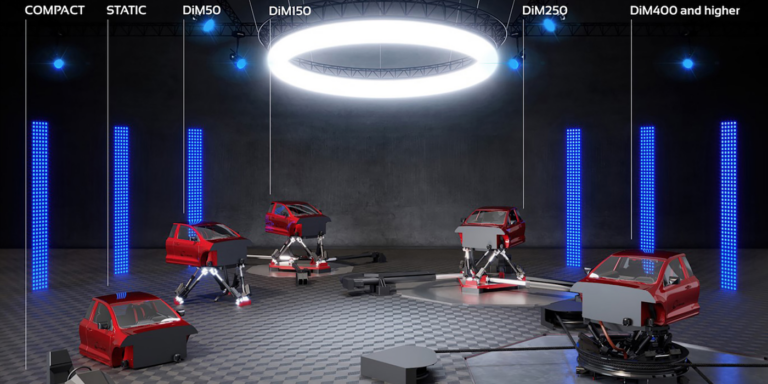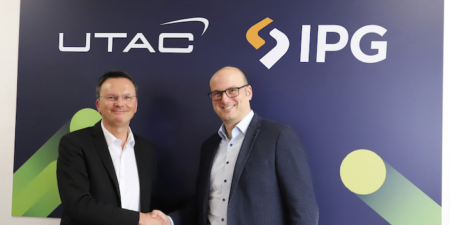Automotive simulation company, VI-grade, has introduced a scheme that allows customers to flexibly configure and upgrade their driving simulators over time. Previously, customers needed to decide up-front exactly what capabilities and performance they expected to need in their driving simulator and budget accordingly – now they can start with a full cockpit static simulator and upgrade as needed. Diego Minen, VI-grade’s CTO, says the offer addresses “an unmet market need”.
The upgrades are facilitated by a hexapod-only motion platform, the DiM50, that compatible with the upper stage of VI-grade’s existing DiM150 and DiM250 simulators.
The DiM50 is an entry-level dynamic simulator suitable for performing ride and ADAS simulation, and basic handling manoeuvres, with a higher degree of realism than static simulators and a competitive price point. The DiM50 shares the same hexapod architecture already featured in VI-grade’s DiM150 and DiM250 dynamic simulator models, and can be upgraded to a 9 degrees of freedom (9DoF) DiM150 or DiM250 model through the addition of a baseframe and three planar motion actuators. Thus the DiM50 can be used for a wide array of automotive applications ranging from ride & comfort, basic vehicle dynamics and control system design, up to HMI/ADAS applications and driver training in motorsports.
Features of the DiM50 include a VI-grade software stack, a proven motion platform, active components (seats, belts, brakes, etc), a hard-real-time computing platform, customisable cockpits, and a HiL-ready architecture. The DiM50 also supports third-party software components through an open environment.
“The DiM50 announcement offers our clients and the market an unprecedented opportunity to purchase a dynamic simulator with a superior degree of realism combined with a low price point. But what makes the DiM50 stand out is that it enables to preserve its investment by providing a potential upgrade path to DiM150 and DiM250,” stated Guido Bairati, VP of sales and marketing. “We believe that DiM50 presents the ideal solution in terms of compromise between performance and investment, which lends itself well to universities, research centres, suppliers and motorsport teams, as well as automotive OEMs that have already invested in bigger simulators.”





